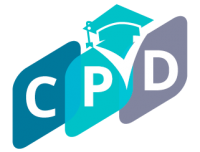Introduction:
In the landscape of educational pedagogy, experiential learning has gained prominence as a powerful approach that goes beyond traditional classroom instruction. Rooted in the philosophy of learning by doing, experiential learning emphasizes the connection between theory and practice. In this article, we will explore the significance of experiential learning and how it transforms education by immersing students in real-world experiences.
- Defining Experiential Learning: Learning by Doing and Reflecting
Experiential learning is an educational philosophy that emphasizes the importance of hands-on experiences in the learning process. Rather than relying solely on lectures and textbooks, experiential learning encourages students to actively engage with the subject matter through real-world experiences. These experiences are then followed by reflection, allowing students to extract meaningful insights and connect theory to practice.
- Hands-On Exploration: Making Learning Tangible
One of the primary features of experiential learning is its emphasis on hands-on exploration. Whether through experiments, field trips, simulations, or projects, students actively engage with the material, making learning more tangible and meaningful. This hands-on approach not only enhances comprehension but also fosters a deeper connection to the subject matter.
- Real-World Relevance: Applying Knowledge in Authentic Settings
Experiential learning bridges the gap between theoretical knowledge and real-world application. By immersing students in authentic settings, whether through internships, simulations, or practical projects, educators provide opportunities for students to apply what they have learned in the classroom to real-world scenarios. This real-world relevance enhances the practical utility of the knowledge, making it more memorable and applicable.
- Problem-Solving Skills: Navigating Challenges in Real-Time
Experiential learning cultivates problem-solving skills by placing students in situations where they must apply their knowledge to navigate challenges. Whether it’s conducting scientific experiments, working on engineering projects, or addressing business challenges, students learn to think critically and adapt their knowledge to solve problems in real-time. This process of active problem-solving contributes to the development of a valuable skill set applicable across various domains.
- Collaborative Learning: Working Together for Success
Experiential learning often involves collaborative projects, simulating the teamwork and collaboration required in the professional world. Whether students are engaged in group assignments, fieldwork, or community service projects, they learn to collaborate effectively, appreciate diverse perspectives, and contribute to shared goals. This collaborative aspect enhances interpersonal skills and prepares students for the collaborative dynamics of the workplace.
- Reflective Practice: Deepening Understanding through Reflection
Reflection is a fundamental component of experiential learning. After engaging in hands-on experiences, students are encouraged to reflect on their actions, observations, and outcomes. This reflective practice deepens their understanding, allowing them to extract meaningful insights, identify areas for improvement, and make connections between their experiences and theoretical concepts. Through reflection, learning becomes an ongoing and iterative process.
- Enhanced Motivation: Intrinsic Engagement in Learning
Experiential learning taps into intrinsic motivation by making the learning process engaging and personally relevant. When students see the direct application of their efforts in real-world scenarios, they are more likely to be motivated and invested in their learning. This intrinsic engagement contributes to a positive attitude towards education and fosters a lifelong love of learning.
- Preparation for Future Careers: Bridging the Gap to the Workplace
Experiential learning serves as a bridge between the academic environment and the professional world. By exposing students to real-world experiences, internships, and industry-related projects, educators prepare them for the challenges and expectations of their future careers. This direct exposure to the workplace environment enhances their readiness for the professional landscape.
Conclusion:
Experiential learning stands as a transformative force in educational pedagogy, reshaping the way students engage with and internalize knowledge. By emphasizing hands-on experiences, real-world relevance, and reflective practice, experiential learning bridges the gap between theory and practice. As we strive to prepare students for the complexities of the 21st century, experiential learning emerges as a dynamic and effective pedagogical approach, promising a future where education is not confined to the classroom but extends into the real-world scenarios that students will encounter throughout their lives and careers.
